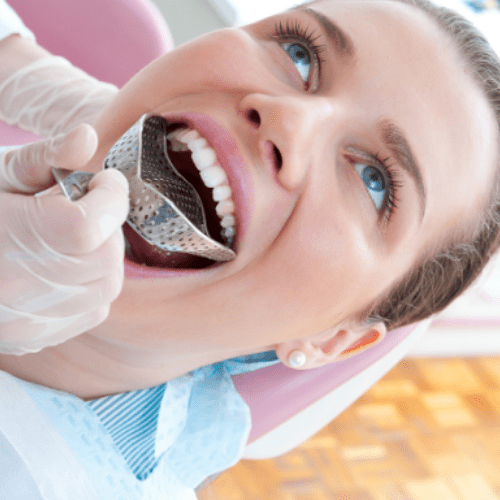

Tear and energy properties of three impression materials. Hydrophilic poly(vinyl siloxane) impression materials: dimensional accuracy, wettability, and effect on gypsum hardness. Tear strength of hydrophilic and hydrophobic polyvinylsiloxane materials. Millar B J, Wood D J, Bubb N L, Gabrielson L. Relationship of syringe-tip diameter to voids in elastomer impressions. Defects in automixed addition silicone elastomers prepared by putty-wash impression technique. Wettability of a hydrophilic addition silicone impression material. In vitro study of the number of surface defects in monophase and two-phase addition silicone impressions. The influence of the impression tray on the accuracy of impressions for crown and bridge work – an investigation and review. J Prosthet Dent 1992 67: 583–589.Ĭarrotte P V, Johnson A, Winstanley R B. Accuracy of one-step versus two-step putty wash addition silicone impression technique. Molding Putty Lip Stretcher Plastic Gloves To ensure your dental impression is made correctly, your no-risk kit includes a tele-visit with our staff to help you achieve great dental impressions at home.

TAKING DENTAL IMPRESSION DOWNLOAD
We don’t recommend the use of triple trays for private work, but if you do wish to use them, please download “ Triple Tray Distortion“.Hung S H et al. At least with a bite taken like this, the additional information can help us compensate for this distortion.ġ0. If any gaps are visible, we know something is distorted. When this has been established, we know we must have the same space on the model as you had in the mouth. There should be no gaps around the preparation or the opposing teeth. The two impression materials most commonly used in pediatric dentistry for space. In the lab, we carefully trim the silicon bite material cutting through the area of the preparation, enabling us to accurately see if the silicon is in place. Once the bands have been fitted to the teeth, an impression is taken. The accuracy of the silicon sections enables us to easily locate the patient’s preoperative position.ĩ. Leave enough teeth for the patient to easily find centric and then syringe your bite material into these localised areas. If you are preparing more than one tooth and are concerned about losing the bite, then we recommend that you prepare a few teeth first, evenly spaced around the arch. You need to syringe a good quality silicon bite material into the area of the preparation. When taking the bite please throw away the wax. We can be working in the belief that we have a 2mm gap when the reality is we only have 1mm.Ĩ. Technicians cannot always tell if an opposing arch is distorted. Remember, an accurate opposing impression is just as important as an accurate working impression. By the time your alginate has sat in the surgery for half a day, been with a courier or in the post for several hours, then waited to slot into the laboratory’s work schedule, it will not have the integrity it had when it first came out of the mouth. With your fingers, spread the material evenly (making sure to cover the sides of the tray too). Alginate distorts over time, absorbing or losing moisture if not kept in perfect conditions. With the palms of your hands, roll the putty into a hot-dog shape. ADULT (15 years old and more) : STEP 1: Take a dental impression for your mouthguard: STEP 2: Make the final molding when received: KIDS (until 15 years. We always recommend using the same silicon impression materials and techniques for the opposing arch. – Place the tray and use an even, sustained pressure. – Syringe the remaining soft body into the prepared indent. This helps to relieve pressure when the impression is placed. – Prepare a deep indent in the putty giving space for the teeth. While it's always a good idea to check in with your breathing, it's not every day you're told to breathe only through your nose. – Place the putty in the tray around the whole arch. What You Can Do There are a few things you can do to reduce the chance of gagging when the dental impression tray is in your mouth: Breathe through your nose. – Syringe the soft body around the preparation. A good one stage technique would be as follows: Poor Tray Selection Inadequate Impression Material Mixing Surface Contamination Poor Margin Detail Internal Bubbles Marginal Tears Choosing the Wrong. Two stage techniques are considerably more technique sensitive. If the correct pressure relief has not been provided, distortion will occur. Two stage techniques allow for the compression of an already set material against a flowing material. We get no such help to pick out the margin.Ħ. Remember you can see the contrast of tooth and gum. You really don’t want us guessing where the edge of your preparation is.


 0 kommentar(er)
0 kommentar(er)
